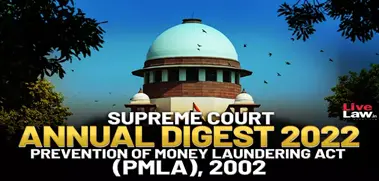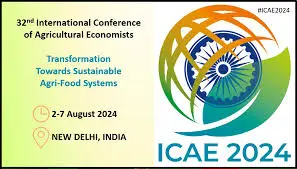Friday, 9th August 2024
Why Himalayan Towns Need a Different Kind of Development
Why in the news?
- The high costs of urban services and the lack of industrial corridors place these towns in a unique financial situation. Current intergovernmental transfers from the centre to urban local bodies constitute a mere 0.5% of GDP; this should be increased to at least 1%.
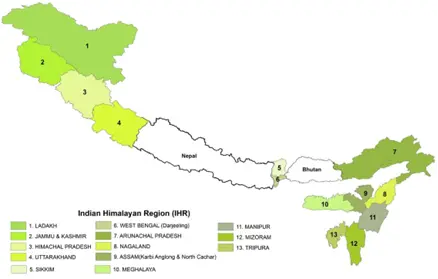
The Indian Himalayan Region (IHR)
About:
- The Indian Himalayan Region (IHR) represents the mountainous area within India that covers the entire Himalayan range.
- It spans 13 Indian States and Union Territories: Jammu and Kashmir, Ladakh, Uttarakhand, Himachal Pradesh, Arunachal Pradesh, Manipur, Meghalaya, Mizoram, Nagaland, Sikkim, Tripura, Assam, and West Bengal, stretching approximately 2,500 km.
Significance:
- Geographical Features: The IHR includes some of the world's highest peaks, such as Kanchenjunga.
- Hydrological Importance: Referred to as India's "water tower," the IHR is the origin of major rivers like the Ganges, Yamuna, Brahmaputra, and their tributaries.
- Ecological Role: The region is crucial for maintaining ecological balance and biodiversity. It supports a diverse range of flora and fauna, including many endemic and endangered species.
- Conservation Areas: It hosts several national parks, wildlife sanctuaries, and biosphere reserves, including the Valley of Flowers National Park and Nanda Devi National Park.
- Climate Influence: The IHR impacts the climate and weather patterns of the Indian subcontinent, serving as a barrier to cold winds from Central Asia and influencing monsoon patterns.
- Cultural Diversity: The region is home to various ethnic communities, each with distinct cultures, languages, and traditions.
- Religious Significance: It contains important religious and pilgrimage sites, such as Amarnath and Badrinath.
- Strategic Importance: The IHR holds strategic significance due to its position along India’s northern borders with China, Nepal, and Bhutan.
Key Concerns in the Indian Himalayan Region:
- Climate Change and Glacial Melting:
- Rapid Glacier Retreat: Himalayan glaciers are melting at an alarming rate, impacting water resources downstream. For instance, the Gangotri Glacier has retreated by over 1,500 meters in the last 70 years.
- Altered Climate Patterns: Changes in temperature and precipitation disrupt local climates, affecting agriculture and livelihoods.
- Increased Natural Disasters: The region faces frequent flash floods, glacial lake outburst floods (GLOFs), and extreme weather events. The 2013 Kedarnath disaster was exacerbated by rapid glacial melting.
- Soil Erosion and Landslides:
- Contributing Factors: Deforestation, unplanned construction, and overgrazing lead to significant soil erosion.
- Landslide Risk: The region is prone to landslides, particularly during the monsoon season. In 2021, a massive landslide in Chamoli district, Uttarakhand, caused extensive damage.
- Water Scarcity and Pollution:
- Drying Water Sources: Many springs and streams are drying up, leading to water scarcity. Over 50% of springs in the Indian Himalayas are affected.
- Pollution Issues: Water sources are contaminated by agricultural runoff, untreated sewage, and industrial effluents, impacting health and ecosystems.
- Developmental Projects:
- Disruption of Ecosystems: The construction of hydroelectric power stations disrupts river ecosystems, affects fish populations, and displaces communities.
- Environmental Neglect: Illegal construction on riverbeds and flood plains has been linked to recent floods in Himachal Pradesh.
- Air Pollution:
- Sources and Impact:
- Increased vehicular emissions, industrial activities, and biomass burning degrade air quality. The mountainous terrain exacerbates pollution, affecting health and visibility.
- For example, Leh in Ladakh has seen rising pollution levels due to increased traffic and construction.
- Sources and Impact:
- Deforestation and Habitat Loss:
- Biodiversity Threats:
- The IHR is home to over 10,000 plant species, 300 mammal species, and 1,000 bird species, many of which are endangered.
- Large-scale deforestation for agriculture and infrastructure leads to habitat destruction.
- Forest Cover Decline: A significant reduction of 902 square kilometres in forest cover was reported in Himalayan states as per the State of Forest Report, 2021.
- Biodiversity Threats:
Government Initiatives to Protect the Indian Himalayan Region (IHR):
- National Mission for Sustaining the Himalayan Ecosystem (NMSHE):
- Objective: To understand and address the impacts of climate change on the Himalayan ecosystem.
- Focus Areas: Monitoring glacial and snow cover, assessing changes in water resources, and evaluating the impacts on biodiversity.
- Activities: Promotes research, policy formulation, and implementation of strategies to sustain the Himalayan ecosystem.
- Indian Himalayas Climate Adaptation Programme (IHCAP):
- Objective: To enhance climate resilience in the Himalayan region through adaptation strategies.
- Focus Areas: Developing and implementing climate adaptation plans, promoting sustainable practices, and building community capacity.
- Activities: Supports projects related to water management, agriculture, and disaster risk reduction to adapt to changing climatic conditions.
- SECURE Himalaya Project:
- Objective: To conserve biodiversity and enhance livelihoods in the Himalayan region.
- Focus Areas: Protecting endangered species, conserving natural habitats, and improving community livelihoods.
- Activities: Engages in habitat restoration, anti-poaching efforts, and community-based conservation initiatives.
- Integrated Himalayan Development Program (IHDP):
- Objective: To promote sustainable development and enhance the quality of life in the Himalayan region.
- Focus Areas: Infrastructure development, natural resource management, and socio-economic development.
- Activities: Supports integrated development projects that balance environmental sustainability with economic growth.
- National Action Plan on Climate Change (NAPCC):
- Objective: To address climate change through coordinated and comprehensive strategies.
- Focus Areas: Reducing greenhouse gas emissions, promoting renewable energy, and enhancing climate resilience.
- Activities: Implements eight missions, including the National Mission for Sustaining the Himalayan Ecosystem, which specifically targets the IHR's environmental challenges.
Supreme Court Judgments Supporting Environmental Conservation in the IHR:
- Recognition of the Right against Climate Change:
- Case: M.K. Ranjitsinh & Ors. v. Union of India.
- Judgement: The Court affirmed the right to be free from adverse climate change impacts under Article 14 and Article 21 of the Constitution.
- Impact: This ruling establishes a legal basis for protecting environmental and human rights, compelling the government to adopt effective climate action measures.
- Adoption of an Ecocentric View of the Environment:
- Case: State of Telangana and Others vs. Mohd. Abdul Qasim.
- Judgement: The Court emphasised an ecocentric approach, advocating for nature-centred values where human activities respect environmental rights.
- Impact: It mandates sustainable living and acknowledges nature’s rights, reinforcing the need for conservation of natural resources like rivers, forests, and mountains.
- Directions on the Carrying Capacity of Himalayan States:
- Case: Ashok Kumar Raghav vs. Union of India and Ors...
- Judgement: The Court directed the central government and petitioner to propose guidelines for assessing and managing the carrying capacity of Himalayan states and towns.
- Impact: This will guide policy and regulation to ensure sustainable development in the Himalayan region, balancing growth with environmental conservation.
Strategic Recommendations for Himalayan Towns:
- Mapping and Vulnerability Assessment:
- Recommendation: Transition from traditional land-use planning to a comprehensive approach incorporating geological and hydrological vulnerabilities.
- Action: Map each town to identify risks, involving local communities in a bottom-up planning process.
- Climate-Resilient Urban Design:
- Recommendation: Replace consultant-driven urban planning with designs that address the unique climate challenges of Himalayan towns.
- Action: Focus on urban designs that enhance climate resilience.
- Urban Financing for IHR:
- Recommendation: Include a specific chapter on urban financing for Himalayan towns in the Finance Commission report.
- Action: Increase intergovernmental transfers to urban local bodies from 0.5% to at least 1% of GDP to support infrastructure needs.
- Focus on Sustainability:
- Recommendation: Engage in discussions on sustainability, emphasising eco-centric urban planning.
- Action: Promote robust, sustainable urban futures through active public participation and planning.
|
UPSC Civil Services Examination, Previous Year Questions (PYQs) Prelims: Q:1 Consider the following pairs: (2020) Peak Mountains
Which of the pairs given above is/are correctly matched?
Ans: (b)
Q:2 If you travel through the Himalayas, you are likely to see which of the following plants are naturally growing there? (2014)
Select the correct answer using the code given below:
Ans: (a)
Q:3 When you travel in Himalayas, you will see the following: (2012)
Which of the above can be said to be the evidence for Himalayas being young fold mountains?
Ans: (d)
Mains: Q1. Differentiate the causes of landslides in the Himalayan region and Western Ghats. (2021) Q2. How will the melting of Himalayan glaciers have a far-reaching impact on the water resources of India? (2020) Q3. “The Himalayas are highly prone to landslides.” Discuss the causes and suggest suitable measures of mitigation. (2016) |
Source: TH
Why Accusations of Witchcraft Persist in India
Why in the news?
- In July 2021, the UN Human Rights Council passed a resolution targeting the eradication of harmful practices related to witchcraft accusations and ritual attacks (HPAWR).
- This resolution brought global focus to an issue, with the UN documenting 20,000 cases of HPAWR between 2009 and 2019 across 60 countries.
- The data reveals that HPAWR is not confined to Africa, as commonly perceived, but is also present in regions such as the USA, Europe, and India.
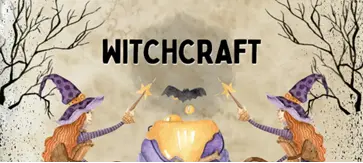
Witchcraft-Related Crimes in India
- India has a longstanding and ongoing problem with witchcraft-related violence.
- The National Crime Records Bureau (NCRB), a key source of crime data in India since 1953, categorises motives for murder, including witchcraft.
- In 2022, 85 murders were documented with witchcraft as the motive, primarily in the states of Chhattisgarh, Madhya Pradesh, Jharkhand, and Odisha, with additional cases in Assam, Bihar, and Telangana.
- Despite a slight decline, the number of such murders remains around 100 annually, suggesting a potentially underreported broader issue.
Perception and Gender Dynamics in Witchcraft Accusations
- Although the term "witch" is etymologically gender-neutral, societal perceptions often link it more with females.
- While the term "wizard" (wicca) is typically associated with males, "witch" is generally seen as female.
- According to author Ipsita Roy Chakraverti, witchcraft, though occasionally viewed as good, is predominantly seen as evil.
- This negative perception often justifies crimes against women, leading to severe social and physical harm even if not always resulting in murder.
- Ignorance and lack of education contribute to such accusations, with mental health issues or disease outbreaks sometimes leading to individuals being labelled as witches.
- Sinister motives include targeting widowed or single women for their property, childless women, and educated young women who pose a threat to local vested interests.
Legislative Measures and their Efficacy: State-Specific Legislation Overview
- Prevention of Witch (Daain) Practices Act (1993) in Bihar: One of the first laws addressing witch-hunting in India, aimed at curbing atrocities against women accused of witchcraft.
- Prevention of Witch (Daain) Practices Act (2001) in Jharkhand: This law was introduced to protect women from being branded as witches and subjected to violence and social ostracism.
- Tonahi Pratadna Nivaran Act (2005) in Chhattisgarh: Targets witch-hunting practices and aims to provide justice to the victims.
- Prevention of Witch Hunting Act (2013) in Odisha: A comprehensive law to prevent witch-hunting and provide protection and rehabilitation to the victims.
- Prevention and Eradication of Human Sacrifice and other Inhuman, Evil, and Aghori Practices and Black Magic Act (2013) in Maharashtra: This law addresses witch-hunting and other inhuman practices like human sacrifice and black magic.
- Prevention and Eradication of Inhuman Evil Practices and Black Magic Act (2017) in Karnataka: Similar to Maharashtra's law, it targets a broader range of harmful practices, including witch-hunting.
- Prevention of Witch Hunting Act (2015) in Rajasthan: Aims to protect individuals from being branded and persecuted as witches.
- Witch Hunting (Prohibition, Prevention, and Protection) Act (2015) in Assam: Focuses on preventing witch-hunting and providing protection and rehabilitation to the victims.
Challenges in Implementation
- Low Prosecution and Conviction Rates: Witch-hunting cases suffer from low prosecution and conviction rates due to insufficient evidence, lack of witnesses, and societal pressures.
- Lenient Penalties: Penalties for witch-hunting in some states, like Jharkhand, are criticised for being too lenient, weakening the law's deterrent effect.
- Ambiguous Legislative Intent: Some laws, such as Odisha’s, are unclear and penalise both witch-hunting and witchcraft, leading to confusion and potential persecution of cultural practices.
- Broad and Generalised Provisions: Many state laws are overly broad, like Maharashtra’s, covering a wide range of practices and making effective enforcement difficult.
- Inadequate Police and Judicial Reforms: Without reforms and specialised training, police and judicial systems struggle to effectively handle witch-hunting cases, compounded by slow justice processes.
Recommendations for Improved Implementation:
- Refinement of NCRB Reporting: The NCRB should update its reporting system to separate witch-hunting from witchcraft-related crimes for better problem assessment and targeted interventions.
- Specific Sections in the IPC: The IPC should include specific sections on witch-hunting to enhance enforcement and prosecution.
- Increased Penalties and Stringent Enforcement: Increase penalties for witch-hunting and ensure strict enforcement to deter and prosecute offenders effectively.
- Clarity of Legislative Intent: Laws should differentiate between witchcraft and witch-hunting, focusing on preventing and punishing violence rather than penalising witchcraft practice.
- Awareness and Training Programs: Implement awareness and training programs for police, judiciary, and the public to improve understanding of legal provisions and combat harmful practices.
Conclusion
While India has made significant strides in addressing witchcraft-related violence through state-specific legislation, enhancing reporting mechanisms, increasing penalties, and focusing on awareness, challenges remain in implementation and enforcement. Taking these steps will ensure better protection for victims and contribute to eradicating these harmful practices, aiding India’s progress as a developed nation.
Source: IE
The Waqf (Amendment) Bill 2024
Why in the news?
- The Central Government has introduced the Waqf (Amendment) Bill 2024, which seeks to amend the Waqf Act of 1995.
- The bill aims to bring significant changes to the regulatory framework governing Muslim charitable endowments.

What is a Waqf Property?
- Definition: Waqf refers to movable or immovable properties that are dedicated exclusively for religious or charitable purposes under Islamic law.
- Nature: A Waqf property is non-transferable and is held perpetually in the name of God. It can be designated for public charitable purposes or held privately to benefit an individual's descendants.
- Utilisation: The proceeds from a Waqf typically fund educational institutions, graveyards, mosques, and shelter homes, benefiting a large section of the Muslim community.
What is a Waqf Board?
- Function: A Waqf Board is a legal entity with nominated members responsible for managing Waqf properties under the Waqf Act 1995.
- Custodianship: The Board appoints a custodian for each property to ensure that its proceeds are utilised for the intended purposes.
- Scope: Waqf Boards currently manage 8.7 lakh properties covering 9.4 lakh acres across India, with an estimated value of ₹1.2 lakh crore. This makes them the third largest landowner in India after the armed forces and the Indian Railways.
- Oversight: The Central Waqf Council (CWC), established in 1964, oversees and advises state-level Waqf Boards across India.
What is the 1995 Waqf Act?
- Purpose: The Waqf Act of 1995 regulates ‘auqaf’ (assets dedicated and notified as Waqf) by a Wakif, the person who dedicates property for purposes recognized by Muslim law as pious, religious, or charitable.
- Dispute Resolution: Under the 1995 Act, in case of a dispute over whether a property can be considered a Waqf, the decision of the Waqf Tribunal shall be final.
- Amendment of 2013: The 1995 Act was amended in 2013 to grant extensive powers to the Waqf Board to designate a property as 'Waqf Property,' a move that has been contentious.
What are the Proposed Amendments in Waqf (Amendment) Bill 2024?
- Regulatory Changes: The bill aims to curtail the powers of Waqf Boards in managing their properties and introduces more government regulation.
- Mandatory Registration: The bill proposes mandatory registration of Waqf properties with the District Collector's Office to enable proper evaluation.
- Government Property Clause: It states that any government property identified or declared as Waqf property, whether before or after the commencement of this Act, shall not be deemed Waqf property.
- District Collector's Role: The district collector will have the authority to decide whether a property is Waqf property or government land, with the decision being final. The collector can amend the revenue record accordingly and submit a report to the state government.
- Suspension of Use: A Waqf property can be deemed suspect or disputed in the absence of valid documentation (Waqf Nama), and it can no longer be used until the district collector issues a final decision.
- Appeals Process: Appeals against decisions of the Waqf Board can now be made in the respective High Courts (HCs).
- Audit Powers: The bill empowers the Central Government to direct the audit of any Waqf at any time, to be conducted by an auditor appointed by the Comptroller and Auditor-General of India or any officer designated by the Central Government.
- Representation: The bill aims to ensure representation of Muslim women and non-Muslims in the Central Waqf Council and State Waqf Boards by including two women and two non-Muslims among their members.
Criticism of the Waqf (Amendment) Bill 2024:
- Concerns by AIMPLB: The All-India Muslim Personal Law Board (AIMPLB) criticises the bill for potentially altering the nature of Waqf properties, making it easier for the government or individuals to usurp them.
- Example: Empowering the Collector as the arbiter, instead of the Waqf Tribunal, gives the government significant control over the regulation of Waqf properties.
- Opposition’s Stand: Opposition parties argue that the bill aims to deprive the Muslim community of their “freedom to manage religious affairs” as guaranteed under Article 26 of the Indian Constitution.
- Government's Argument: The Central Government contends that the demand for regulating Waqf Boards comes from within the Muslim community itself.
Source: IE
August Kranti Day 2024: 82nd Anniversary of the QIM
Why in the news?
- In 2024, India observes the 82nd anniversary of the Quit India Movement (QIM), launched in 1942.
- The QIM was a critical phase in India’s struggle for independence, initiated under Mahatma Gandhi’s leadership, demanding the immediate withdrawal of British forces.
What was QIM?
- About: A pivotal non-violent civil disobedience campaign aimed at ending British colonial rule. It mobilised Indians against British rule and garnered international sympathy and pressure.
Reasons for Starting QIM:
- Failure of Cripps Mission (1942): Exposed Britain’s reluctance to grant full independence and offered dominion status instead, which threatened national unity.
- Economic Impact of World War II: Rising prices and shortages due to mismanagement and profiteering caused widespread discontent.
- Hasty British Evacuation from Southeast Asia: Reports of British abandonment of Indian refugees increased fears of a similar fate for India.
- Feeling of Imminent British Collapse: Allied reverses and British withdrawals led to beliefs that British power was weakening.
- Imminent Japanese Invasion: Leaders believed initiating the struggle was necessary as Japan’s potential invasion could demoralise Indian resistance.
Quit India Resolution:
- Adoption: On 14th July 1942 by the Congress Working Committee and accepted with modifications by the AICC on 8th August 1942.
- Resolutions:
- Immediate end to British rule.
- Commitment to defend India against Fascism and imperialism.
- Formation of a provisional government post-British withdrawal.
- Launch of a civil disobedience movement.
- Gandhi's Role: Gandhi was named leader, delivering the “Do or Die” speech.
Government Response to QIM:
- Spread of the Movement:
- Public Actions: Attacks on symbols of authority, sabotage, and arrests of leaders.
- Underground Activity: Key figures like Aruna Asaf Ali led underground operations.
- Parallel Governments: Established in Ballia, Satara, and Tamluk.
- British Response:
- Repression: Arrests, suppression of the press, violent crackdowns, and imposition of military control.
- Casualties: Estimated 10,000 killed during protests and confrontations.
Nature of QIM: Spontaneous vs. Organized:
- Spontaneous:
- Description: Described as a serious and uncontrollable rebellion by Viceroy Linlithgow, marked by rapid, uniform reactions.
- Organised:
- Radical Movements: Prior radical movements set the stage.
- Twelve Point Programme: Included Gandhian methods and other strategies.
- Past Preparations: Previous mass mobilizations enriched QIM.
Lessons and Significance of QIM:
- Lessons:
- For Indian Masses: Gandhi and Congress symbolised liberation.
- For Congress: Suppression discredited left-wing demands, leading to a shift towards moderation.
- For the British: Realised managing mass movements was challenging without wartime powers, making them more open to negotiation post-war.
- Significance:
- Immediate Demand for Independence: Cemented independence as a pressing national goal.
- Constructive Work: Focused on reorganisation and preparing for future negotiations.
Conclusion:
The Quit India Movement (QIM) was a critical juncture in India’s independence struggle, igniting mass protests and parallel governments. Despite British repression, it accelerated the demand for freedom and contributed to the eventual end of British colonial rule in India
|
UPSC Civil Services Examination Previous Years’ Questions (PYQs) Prelims Q:1 With reference to 8th August 1942 in Indian history, which one of the following statements is correct? (2021)
Ans: (a)
Q:2 With reference to Indian freedom struggle, consider the following events: (2017)
What is the correct chronological sequence of the above events?
Ans: (c)
Q:3 Quit India Movement was launched in response to (2013)
Ans: (b)
Q:4 With reference to Indian freedom struggle, Usha Mehta is well-known for (2011)
Ans: (a)
Q:5 Which one of the following observations is not true about the Quit India Movement of 1942? (2011)
Ans: (b)
Q:6 During the freedom struggle, Aruna Asaf Ali was a major woman organizer of underground activity in (2009)
Ans: (c)
Q:7 With which one of the following movements is the slogan “Do or Die” associated? (2009)
Ans: (d)
Mains Q:1 Discuss the role of women in the freedom struggle, especially during the Gandhian phase. (2016) Q:2 In what ways did the naval mutiny prove to be the last nail in the coffin of British colonial aspirations in India? (2014) |
India waives clinical trials
Why in the news ?
- The Indian government has waived the requirement for clinical trials in India for certain drugs already approved by regulatory agencies in the US, UK, Japan, Australia, Canada, and the European Union.

Clinical Trials in India:
- About:
- Clinical trials in India are essential for assessing the safety and efficacy of new drugs and treatment protocols.
- They are conducted in phases and provide valuable data due to India's diverse population and range of medical conditions.
- Regulatory Framework:
- Governed primarily by the Central Drugs Standard Control Organization (CDSCO) under the Ministry of Health and Family Welfare.
- Legal framework includes the Drugs and Cosmetics Act, 1940, and the New Drugs and Clinical Trials Rules, 2019.
- Institutions Involved:
- Central Drugs Standard Control Organization (CDSCO): Apex body for drug approval and clinical trial oversight.
- Indian Council of Medical Research (ICMR): Sets ethical guidelines for trials.
- Drug Controller General of India (DCGI): Head of CDSCO, responsible for trial approvals and compliance.
- Clinical Trial Registry of India (CTRI): Online registry established in 2007 for transparency and accountability in clinical trials.
- Ethical Oversight and Committees:
- Ethics Committees (ECs): Review trial protocols to ensure participant safety and rights.
- Institutional Review Boards (IRBs): Monitor ethical aspects within institutions.
- Independent Ethics Committees: Ensure ethical standards for trials outside institutional setups.
- ICMR National Ethical Guidelines: The New Drugs and Clinical Trials Rules, 2019, mandate compensation for trial-related injuries and ensure swift approval while maintaining safety standards.
India Waives Clinical Trials for Several Drugs:
- About the News:
- The government has waived local clinical trials for certain drugs already approved in the US, UK, Japan, Australia, Canada, and the EU.
- Categories exempt from local trials include:
- Orphan drugs for rare diseases
- Gene and cellular therapy products
- New drugs for pandemics
- New drugs for special defence purposes
- New drugs with significant therapeutic advances
- Rule Under Which This Was Done:
- The waiver is granted under Rule 101 of the New Drugs and Clinical Trials Rules, 2019, by the DCGI.
- Benefits:
- Aligns India with global markets, reduces drug availability delays, lowers costs for pharmaceutical companies, and decreases government procurement costs.
- Expected to promote research and innovation by providing earlier access to advanced medicines and patient data, shifting focus to value in the pharmaceutical industry.
- Concerns:
- Previous waivers were permitted, but a 2012 parliamentary standing committee report raised concerns about approving new drugs without local trials.
- Public health advocates call for careful scrutiny of each waiver due to potential needs for local trials based on Indian conditions and genetic factors.
Source: TH
National Coastal Mission Scheme
Why in the news?
- The Minister of State for Environment, Forest and Climate Change recently informed the Lok Sabha about the National Coastal Mission Scheme.
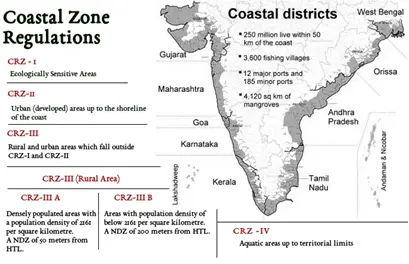
About the National Coastal Mission Scheme:
- Launch Year: The scheme was launched in 2014.
- Foundation: It is part of the National Action Plan on Climate Change (NAPCC).
- Objective: The scheme aims to address the impact of climate change on coastal and marine ecosystems, infrastructure, and communities in coastal areas through both adaptation and mitigation measures.
- Implementation: The scheme operates under the National Coastal Management Program and includes the following components:
- Mangroves and Coral Reefs Conservation: Management Action Plan focused on conserving mangroves and coral reefs.
- Research & Development: Advancing research and development in marine and coastal ecosystems.
- Beach Development: Promoting the sustainable development of beaches through the Beach Environment & Aesthetic Management Service.
- Capacity Building: Enhancing the capacity of Coastal States/UTs in marine and coastal ecosystem conservation, including beach cleaning drives.
- Implementation Agencies:
- The scheme is implemented by the State Governments of Coastal States and Union Territory (UT) Administrations.
Key Facts about the National Action Plan on Climate Change (NAPCC):
- Launch Date: The NAPCC was formally launched on June 30th, 2008.
- Focus: It identifies measures that promote development objectives while also addressing climate change.
- Core Components: The NAPCC comprises eight "National Missions," which focus on understanding climate change, adaptation, mitigation, energy efficiency, and natural resource conservation.
- The Eight National Missions are:
- National Solar Mission
- National Mission for Enhanced Energy Efficiency
- National Mission on Sustainable Habitat
- National Water Mission
- National Mission for Sustaining the Himalayan Ecosystem
- National Mission for a Green India
- National Mission for Sustainable Agriculture
- National Mission on Strategic Knowledge for Climate Change
Source: PIB
Bhoj Wetland
Why in the news?
- The Union Government recently clarified that Bhoj Wetland, a Ramsar site in Bhopal, Madhya Pradesh, is not at risk of being delisted from the Ramsar Convention list of wetlands of international importance.
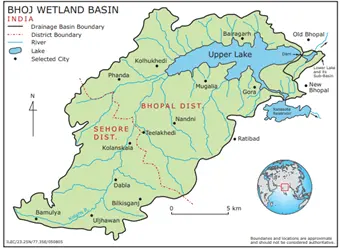
About Bhoj Wetland:
- Location: Situated in Bhopal, Madhya Pradesh, the Bhoj Wetland comprises two contiguous human-made reservoirs known as the Upper Lake (Bhojtal or Bada Talaab) and the Lower Lake (Chhota Talaab).
- Surroundings: The Upper Lake is bordered by Van Vihar National Park to the south, human settlements to the east and north, and agricultural fields to the west. It is a crucial source of potable water for Bhopal.
- Biodiversity: The wetland is rich in biodiversity, housing over 15 species of fish and various vulnerable species, including turtles, amphibians, and aquatic invertebrates. It is particularly diverse in macrophytes, phytoplankton, and zooplankton.
- Ramsar Designation: Bhoj Wetland was designated as a Ramsar site in 2002.
About the Ramsar Convention:
- Establishment: The Ramsar Convention was signed on February 2, 1971, aiming to preserve the ecological character of wetlands of international importance.
- Naming: Named after Ramsar, the Iranian city where the treaty was signed, the convention designates protected areas as 'Ramsar sites' for conservation efforts.
Source: IE
Guru Ghasidas-Tamor Pingla Tiger Reserve
Why in the news?
- The Chhattisgarh government recently announced the establishment of a new tiger reserve named Guru Ghasidas-Tamor Pingla Tiger Reserve.
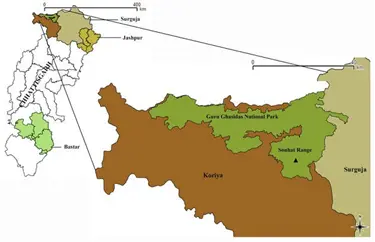
About Guru Ghasidas-Tamor Pingla Tiger Reserve:
- Location: Situated in northern Chhattisgarh, bordering Madhya Pradesh and Jharkhand.
- Significance: This will be Chhattisgarh's fourth tiger reserve, joining the ranks of Udanti-Sitanadi, Achanakmar, and Indravati Reserves.
- Area: The reserve covers the combined regions of Guru Ghasidas National Park and Tamor Pingla Wildlife Sanctuary.
- Fauna: The reserve is home to diverse wildlife, including tigers, leopards, hyenas, jackals, wolves, sloth bears, barking deer, chinkara, and chital.
- Rivers: It is the origin point for major rivers such as Hasdeo Gopad and Baranga, and a catchment area for rivers like Neur, Bijadhur, Banas, Rehand, and various smaller streams.
Guru Ghasidas National Park:
- Connectivity: The park provides a vital corridor for tiger movement between Bandhavgarh and Palamau Tiger Reserves, linking Jharkhand and Madhya Pradesh.
- History: Initially part of Sanjay Dubri National Park, Guru Ghasidas National Park was established as a separate entity in Chhattisgarh’s Sarguja region following the state's formation in 2001.
Source: TH
Rashtriya Vigyan Puraskar (RVP)
Why in the news?
- The central government recently announced the complete list of awardees for the inaugural Rashtriya Vigyan Puraskar (RVP) 2024.

About:
- ISRO-Chandrayan 3 Team: This team will receive the Vigyan Team award for their significant contribution to Space Science and Technology.
- Govindarajan Padmanabhan: The celebrated biochemist has been selected as the first recipient of the Vigyan Ratna Puraskar.
About Rashtriya Vigyan Puraskar (RVP):
- Introduction: The RVP is a newly established set of awards by the Government of India, designed to honour outstanding contributions in the fields of Science, Technology, and Innovation.
- Objective: The awards aim to recognize the significant and inspiring contributions made by scientists, technologists, and innovators, whether individually or in teams, across various scientific and technological fields.
- Significance: RVP represents one of the highest recognitions in the domains of science, technology, and innovation in India.
Eligibility:
- Who Can Apply:
- Eligible individuals include scientists, technologists, and innovators working in government or private sector organisations.
- As well as independent individuals who have made groundbreaking contributions in any field of science, technology, or technology-led innovation.
- Persons of Indian origin residing abroad who have made exceptional contributions benefiting Indian communities or society are also eligible.
- Domains:
- The awards cover 13 specific domains: Physics, Chemistry, Biological Sciences, Mathematics & Computer Science, Earth Science, Medicine, Engineering Sciences, Agricultural Science, Environmental Science, Technology & Innovation, Atomic Energy, Space Science and Technology, and Others.
- The selection process ensures representation from each domain, with a focus on gender parity.
Categories of Awards:
- Vigyan Ratna (VR):
- Recognizes lifetime achievements and contributions in any field of science and technology.
- Vigyan Shri (VS):
- Acknowledges distinguished contributions in any field of science and technology.
- Vigyan Yuva-Shanti Swarup Bhatnagar (VY-SSB):
- Encourages young scientists under 45 years old who have made exceptional contributions in any field of science and technology.
- Vigyan Team (VT):
- Honours teams of three or more scientists/researchers/innovators who have made outstanding contributions through teamwork in any scientific or technological field.
Selection Process:
- Rashtriya Vigyan Puraskar Committee (RVPC):
- All nominations for the RVP awards are reviewed by the RVPC, chaired by the Principal Scientific Adviser (PSA) to the Government of India.
Award Ceremony:
- Date:
- The award ceremony for all categories will be held on August 23rd, designated as National Space Day.
- Awards:
- Recipients will receive a Sanad (certificate) and a medal as part of the honour.
|
UPSC Civil Services Examination Previous Year Question (PYQ) Prelims Q:1 For outstanding contribution to which one of the following fields is Shanti Swarup Bhatnagar Prize given? (2009)
Ans: (c) |
Source: ABP
India's Interests in the Middle East
Context:
- The Middle East remains a region of profound significance for the world, and India is no exception.
- The recent escalation between Israel and Iran-backed forces, characterised by a vicious cycle of violence and retaliation, underscores the region's complex dynamics.
- This prolonged instability not only destabilise the region but also has global repercussions, including oil price volatility and heightened geopolitical tensions.
- Given its strategic location, energy security interests, and growing economic ties, India has a vital stake in a stable Middle East.
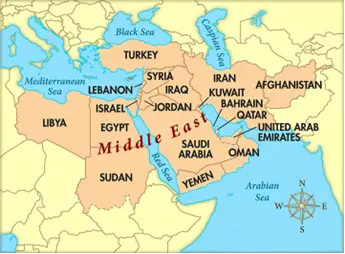
What is the Significance of the Middle East for India?
- Energy Security and Trade Ties:
- The Middle East is essential for India's energy security, supplying significant crude oil and natural gas.
- Major energy partners include Saudi Arabia, Iraq, and the UAE.
- According to the IEA's World Energy Outlook 2021, India's share in global primary energy consumption is projected to rise from 6.1% to 9.8% by 2050.
- Disruptions in the region’s energy supply impact India's economy and inflation levels.
- Counter-Terrorism Cooperation:
- The Middle East has been a safe haven for terrorist organisations such as al-Qaeda and ISIS, which threaten India's national security.
- India collaborates with the UAE, Saudi Arabia, and Israel to enhance intelligence sharing and counter-terrorism efforts.
- India has imported USD 2.9 billion in military equipment from Israel.
- Saudi Arabia has committed to strengthening counter-terrorism partnerships with India.
- Diaspora and Remittance Flows:
- A significant portion of India's diaspora resides in the Middle East, with over 66% of NRIs living in countries like the UAE and Saudi Arabia.
- These expatriate communities contribute to local economies and are a vital source of remittances for India.
- India has taken measures to ensure the welfare and security of its diaspora.
- Cultural and Civilizational Linkages:
- The Middle East and India share deep cultural and historical ties, reflected in shared heritage and traditions.
- Initiatives like the India-Arab League media symposium and the BAPS Hindu Mandir in Abu Dhabi strengthen these cultural connections.
- Regional Connectivity and Infrastructure:
- India is involved in regional infrastructure projects such as the Chabahar port, the International North-South Transport Corridor (INSTC), and the India-Middle East-Europe Economic Corridor.
- These projects enhance India’s access to Central Asia and Europe, boosting trade and reducing dependence on Pakistan for access to Afghanistan.
- Multilateral Engagement and Global Influence:
- India’s engagement with the Middle East allows it to exercise influence in multilateral forums like the UN and the OIC.
- This involvement helps enhance India's global standing and address domestic issues through collaboration with OIC countries.
Why Does the Middle East Consistently Remain a Region of Persistent Conflict and Instability?
- Geopolitical Rivalries and Proxy Conflicts:
- The region is a hotspot for rivalries among powers like Iran, Saudi Arabia, Israel, and the US, leading to proxy conflicts.
- Examples include the conflict in Yemen between Iran-backed Houthi rebels and the Saudi-led coalition.
- Protracted Conflicts and Unresolved Disputes:
- Long-standing conflicts such as the Israeli-Palestinian issue resist resolution due to external involvement and rigid positions.
- Recent agreements like the Abraham Accords face setbacks, reversing prior progress.
- Sectarian Divides and Identity Politics:
- Deep sectarian divides, particularly between Sunni and Shia Muslims, fuel conflicts and power struggles.
- Identity-based movements and radical ideologies, such as those seen in the Syrian civil war, contribute to political fragmentation.
- Authoritarian Regimes and Lack of Democratisation:
- Many Middle Eastern countries are governed by authoritarian regimes that prioritise regime security over citizens' welfare.
- The lack of democratic reforms and accountable governance leads to uprisings and sustained instability.
- Resource Scarcity and Environmental Challenges:
- The Middle East faces severe environmental issues, including oil resource depletion and water scarcity.
- These constraints can exacerbate existing tensions and lead to new conflicts, such as the dispute over the Grand Ethiopian Renaissance Dam.
How Can India Strengthen Its Relationship with the Middle East?
- Balanced and Nuanced Foreign Policy Approach:
- India should maintain a balanced approach, avoiding alignment in regional rivalries and promoting dialogue.
- Efforts include supporting a two-state solution for Palestine while maintaining communication with Iran despite US sanctions.
- Enhancing Economic Engagement and Interdependence:
- Strengthening economic ties through trade and investment can foster regional stability.
- Initiatives like the India-UAE Comprehensive Economic Partnership Agreement and promoting digital initiatives can deepen economic relations.
- Strengthening Defense and Security Cooperation:
- India can enhance defense cooperation through joint exercises and technology development.
- Positioning itself as a reliable security partner contributes to regional stability and trust.
- Middle East as Link Between the Global North and Global South:
- India can mediate between Middle Eastern countries and Western powers, advocating for developing nations' interests and fostering South-South cooperation.
- Promoting Mutual Tourism:
- Encouraging mutual tourism through marketing campaigns and streamlined visa processes can strengthen tourism and hospitality ties.
- Strengthening Disaster Management and Humanitarian Assistance:
- India can offer disaster management and humanitarian aid, drawing on its capabilities and experience, as exemplified by Operation Dost in Turkey and Syria.
Conclusion
The Middle East holds significant importance for India due to its historical, cultural, and economic ties. By leveraging its position as a leading voice of the Global South, India can play a constructive role in bridging divides and addressing shared challenges with the region and global powers.
|
UPSC Civil Services Examination, Previous Year Question (PYQ) Prelims Q:1 Mediterranean Sea is a border of which of the following countries? (2017)
Select the correct answer using the code given below:
Ans: C
Q:2 Which one of the following countries of South-West Asia does not open out to the Mediterranean Sea? (2015)
Ans: B
Q:3 The term “two-state solution” is sometimes mentioned in the news in the context of the affairs of (2018)
Ans: B
Mains Q:1 “India’s relations with Israel have, of late, acquired a depth and diversity, which cannot be rolled back.” Discuss. (2018) |
Source: IE
Share the article
Edukemy’s Current Affairs Quiz is published with multiple choice questions for UPSC exams
MCQ
Get Latest Updates on Offers, Event dates, and free Mentorship sessions.

Get in touch with our Expert Academic Counsellors 👋
FAQs
UPSC Daily Current Affairs focuses on learning current events on a daily basis. An aspirant needs to study regular and updated information about current events, news, and relevant topics that are important for UPSC aspirants. It covers national and international affairs, government policies, socio-economic issues, science and technology advancements, and more.
UPSC Daily Current Affairs provides aspirants with a concise and comprehensive overview of the latest happenings and developments across various fields. It helps aspirants stay updated with current affairs and provides them with valuable insights and analysis, which are essential for answering questions in the UPSC examinations. It enhances their knowledge, analytical skills, and ability to connect current affairs with the UPSC syllabus.
UPSC Daily Current Affairs covers a wide range of topics, including politics, economics, science and technology, environment, social issues, governance, international relations, and more. It offers news summaries, in-depth analyses, editorials, opinion pieces, and relevant study materials. It also provides practice questions and quizzes to help aspirants test their understanding of current affairs.
Edukemy's UPSC Daily Current Affairs can be accessed through:
- UPSC Daily Current Affairs can be accessed through Current Affairs tab at the top of the Main Page of Edukemy.
- Edukemy Mobile app: The Daily Current Affairs can also be access through Edukemy Mobile App.
- Social media: Follow Edukemy’s official social media accounts or pages that provide UPSC Daily Current Affairs updates, including Facebook, Twitter, or Telegram channels.

